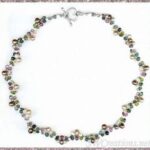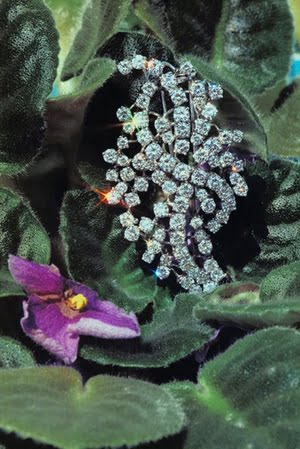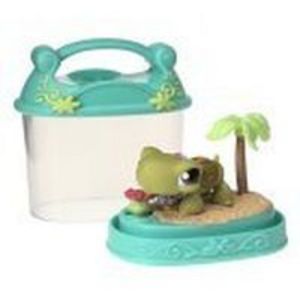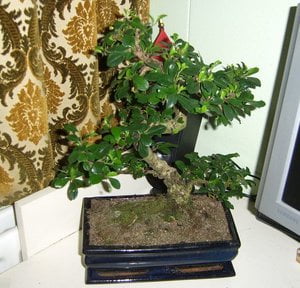The gem tourmaline comes in an unprecedented number of colors. It has many shades that are distinctly its own, with the most famous being the pariaba tourmaline. But many of tourmaline’s pinks and greens are quite unique as well.
Tourmaline got its name form “tura mali” which literally translates to mean “stone of mixed colors.” An Egyptian myth claims that tourmaline began as a clear stone. However, as it rained from the heavens, it fell through a rainbow thereby catching many different shades of red, pink, yellow, green, blue, honey, violet, brown, and black.
The most common tourmaline runs from a blue-black to a deep black color. It is called “schorl.” This variety of the gem tends to be rich in iron. It accounts for about 95 percent of the tourmaline found in nature. Clear tourmaline is referred to as “achroite” and is much less popular than its many brothers and sisters.
Bright red tourmaline is called “rubellite” because it not only mimics the finest red ruby, in some instances, it actually manages to exceed it. These particular tourmaline stones have vibrancy and clarity and are intense throughout.
Reddish pink tourmaline that changes color from red to pink, depending upon the type of light in which it is observed, is referred to as shocking pink tourmaline. It can skew to an unusual watermelon pink color.
Blue tourmaline is called “indigolite.” It can skew from a pale blue to a deep, almost sapphire, color. Paraiba tourmaline, which wasn’t discovered until 1987, is a deep, intense turquoise or neon blue color. It comes from one single location, a mine in Paraiba Brazil. Highly prized for its beauty, paraiba is some of the most expensive tourmaline in the world.
Green tourmaline is called “verdelite.” It ranges in color from a pale spring grass green to the most intense deep emerald green. It can be very expensive as well.
Purple tourmaline is referred to as “siberite.” It ranges in color from a medium violet shade to a deep amethyst.
Yellow tourmaline is simply called “canary.” It is, however, extremely rare. Most of what is seen in the market today is actually lab created. There is also a yellowish-brown tourmaline, called “dravite,” but it is generally not used in jewelry. Both the yellow and brown varieties of the stone are rich in magnesium. It is that mineral that gives it the unusual shade.
There are even bicolored tourmalines; the most well-known of which is watermelon tourmaline. It has slices of color ranging from green to pink or red.
The Greeks considered tourmaline a magical stone because of its dicrohism. They also prized the gem highly because no two stones of the same color ever looked exactly alike; thereby assuring everyone of their own unique gem. They, like the Romans and Egyptians, felt that the gemstone a great number of metaphysical properties. It was believed to be helpful in improving circulation, increasing mental alertness, and strengthening the immune system. Tourmaline is also known as the gem of friendship and love and is said to ensure a long lasting relationship of either.
This gemstone consists of mixed crystals of aluminum boron silicate and the various minerals that help make its many colors so unique. Because the mixture is never the same, the gem always appears slightly different. The smallest change in its overall structure and composition makes for a totally different color spectrum.
Tourmaline’s dischroism allows it to look different from every angle. At one angle it might appear quite intense, while at another it seems watered down or nearly clear. While this property is often a positive for gem collectors, it is definitely not a favorite of gem cutters. It requires the cutting of the stone to be extremely precise. For this reason, some gem cutters shy away from working with this gem material.
Tourmaline ranks 7.5 on the Mohs scale of hardness, which makes it a good gemstone for use in most types of jewelry. It will stand up wonderfully in earrings, necklaces, and pendants. Caution must, however, be given in preparing it for rings or bracelets. It is set into both gold and sterling silver, almost equally.
It is most often faceted because of its color saturation and clarity. However, it can also be cabochon cut as well as used in beading; the latter of which has become popular over the last couple of years.
Tourmaline can be found in many areas around the world, including Afghanistan, Africa, Brazil, Kenya, Madagascar, Mozambique, Nigeria, Pakistan, Sri Lanka, the United States and Zimbabwe. In the U.S., the stone is mined in California and Maine. However, the largest and most desirable stones typically come from Africa or Brazil.
The gem continues to peak the interest of today’s jewelry connoisseurs who are purchasing the gem in large quantities because of its beauty, durability, color, and clarity. Thankfully, there is currently a large supply available to meet the demand, in spite of its continuing growth in popularity. While, that could certainly change in the future, if the gem’s popularity continues to grow, for now, it assures that jewelry lovers can continue to enjoy the rainbow stone.








